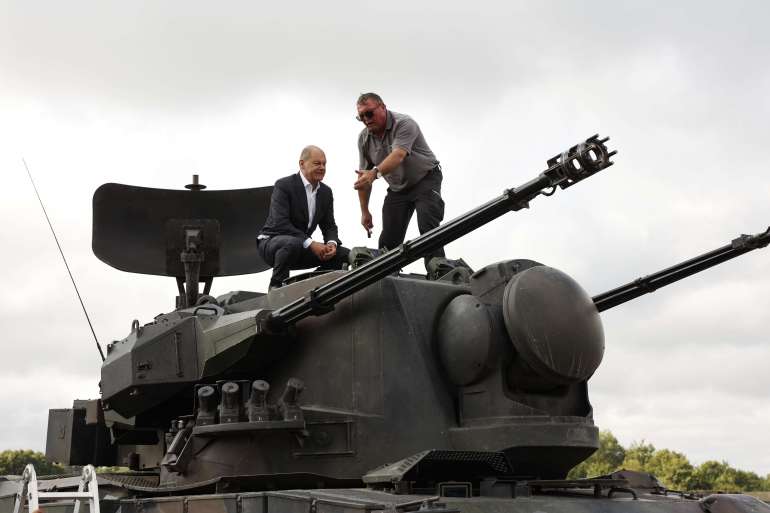The little-known weapon knocking down Iranian drones over Kyiv

Since September, Ukrainian air defenses have destroyed 540 Iranian kamikaze drones, according to Yurii Ihnat, the spokesperson for the Ukrainian air force. The Gepard “is effective against these UAVs, as well as against cruise missiles,” he added, “but this weaponry, which is intended for air defense of the Ground Forces, is not enough.”
Given the volume of drone and missile threats, Ukrainian forces still have to use a wide range of expensive anti-aircraft missile systems, both older Soviet-era weapons as well as newer radar systems and missile launchers sent by Western allies.
While U.S. officials can’t confirm the huge number of downed drones, “we don’t have any reason to not believe what they say,” one Defense Department official who requested anonymity to discuss the issue said. “But we have to defer to them, since we can’t be there and see it for ourselves or account for it for ourselves.”
While the Gepard has proven exceptionally effective, problems loom on the horizon.
Many of the rounds for the vehicles’ two guns were manufactured in Switzerland, and the government there has refused to allow Germany to re-export those rounds to Ukraine, citing its neutral status.
German Defence Minister Christine Lambrecht wrote to the Swiss government in October asking to send 12,400 rounds of Swiss-made ammunition to Ukraine, a request that was rejected. In December, German manufacturer Rheinmetall said it would open a new production line to start making 35mm ammunition, though the first rounds won’t be available until later this year.
That lack of domestic industrial capacity has increasingly alarmed Western governments since the start of the war. As a result, the U.S. and its European allies are hurriedly working to identify munitions they might be able to pull out of older stockpiles and considering ways to begin pooling resources as the war in Ukraine continues to drain warehouses across NATO.
In Washington, closed-door talks have begun about pulling Cold War-era munitions out of bunkers and upgrading them enough to be useful to Kyiv, according to one person familiar with the discussions. One such program has already started, with missiles for long-retired U.S.-made HAWK air defense systems slated to get the necessary updates to be sent to the fight.
The HAWK missiles would be paired with several launchers Spain has pledged to send Ukraine. The Hawk is still in use in Europe and elsewhere, but was phased out by the U.S. Army in the early 1990s in favor of the Patriot system, meaning the existing missiles in American warehouses need to be refurbished.
Those ‘90s retirements were part of a wider trend across the NATO alliance that saw a slowdown in production on many weapons and cuts to defense spending as Europe rushed to embrace the peace dividend widely assumed to come with the end of the Soviet Union.
The U.S. is also looking for ways to choke off the supply of Iranian drones at the source.
“We are looking at ways to target Iranian UAV production through sanctions, export controls, and talking to private companies whose parts have been used in the production,” National Security Council spokesperson Adrienne Watson said. “We are assessing further steps we can take in terms of export controls to restrict Iran’s access to technologies used in drones.”
Lara Seligman contributed to this report